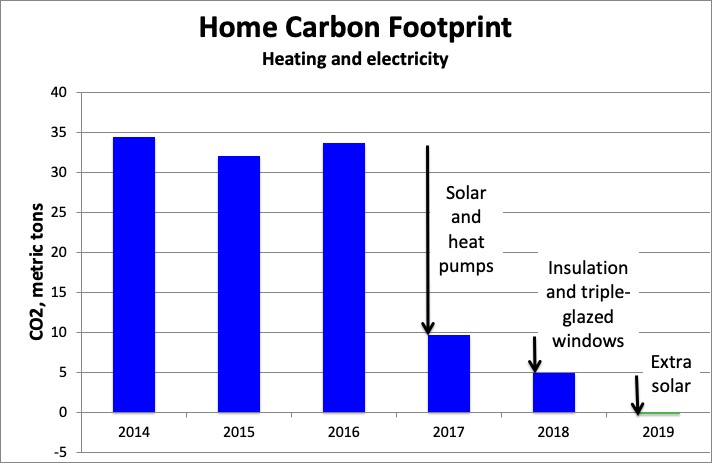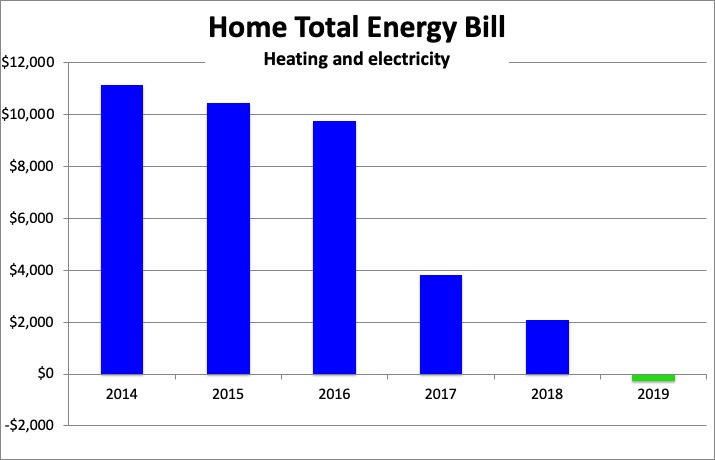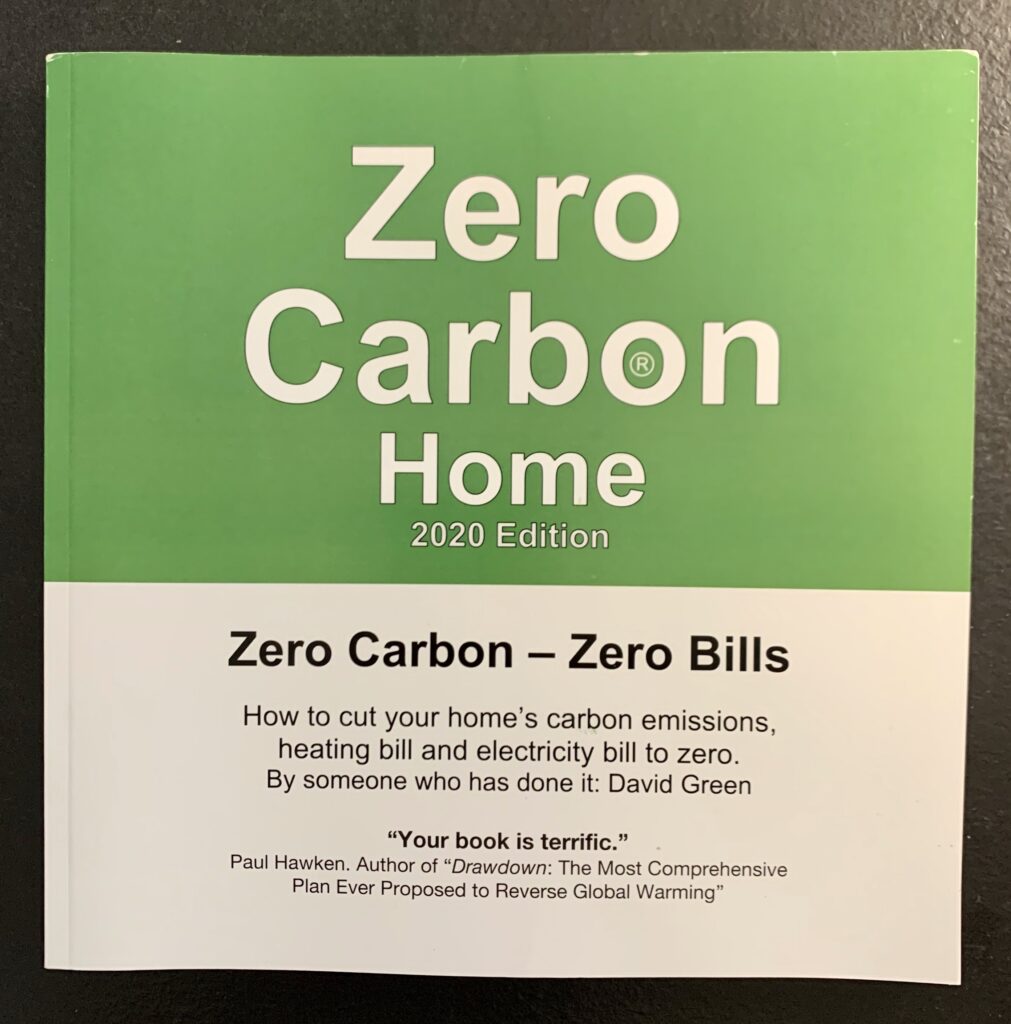In 2021, I ordered 3 different home batteries (from Generac, Sonnen and EnPhase at about 15kWh each) to go with existing and new solar-panel arrays (this is how you get the SMART MA subsidy for batteries) for our house and two rental properties we own. THIS IS VERY COMPLEX!
•I was faced with replacing propane powered back-up generators at all 3 houses
•Would have cost $5k per house plus $500 a year for maintenance/service
•The batteries were about $20k each after installation, none was a Tesla Powerwall
•Powerwall cannot both run the house and charge from solar panels together making it useless during lengthy power outages in winter. It is designed for power arbitrage (CA), not back-up generation (MA)! This can be alleviated if you buy the Tesla inverter. A friend just installed two Powerwalls plus this inverter and it cost $23,500 in MA.
•The batteries+arrays were profitable (5-10% IRR) vs. arrays alone (10-15% IRR)
•A 15kWh battery will run my house (but not the heat pumps) for a day
•Not enough! We have had 3-day power outages at our house
•In late 2021 I ordered the Lightening (with a 100kWh battery = 7 PWs)
•In 2023 I cancelled all 3 battery orders. With V2H on most vehicles by 2025, don’t get a back-up generator or house battery – get V2H!
The V2H and V2G capabilities of EVs are one of the main reasons we need a time of day tariff for electricity in MA. CA has it and it is essential to reducing peaker plant usage on hot summer afternoons as well as saving money by charging your battery at night and using it during the day.
The introduction of this tariff would have a huge impact on greenhouse gas emissions. It would also allow low-income households to reduce their electric bills substantially by, for instance running the dishwasher and clothes dryer (and charging their EVs) at night.
David Green – the “Green Guru”
The highly-acclaimed book “Zero Carbon Home”
How we cut our home’s carbon emissions to zero
How we cut our home’s utility bills to zero
Solar panels on the roof of our house
Our heat pumps
Fiberglass and ISO board insulation on the roof of our house
Triple-pane windows in our living room
Useful links:
The Easiest Way to Calculate Your Home’s Carbon Footprint:https://greenzerocarbonhome.com/2018/07/what-is-the-carbon-footprint-of-natural-gas-heating-oil-propane-and-coal/
Written Answers to over 300 Questions about Zero Carbon Homes:https://greenzerocarbonhome.com/webinar-questions-and-answers/
Finance and Net Zero Energy Terms explained: https://greenzerocarbonhome.com/energy-and-finance-terms-explained/
Zero Carbon Home Website Home Page: https://greenzerocarbonhome.com
Database of State Incentive for Renewable Energy (DSIRE) https://www.dsireusa.org
Published articles on Zero Carbon and Net Zero Energy:
Department of Energy, EnergySage, “Zero Carbon Home”https://www.energysage.com/project/7230/zero-carbon-home/
Zero Energy Project, “My Zero Energy Retrofit beats my 401k”https://zeroenergyproject.org/2018/09/23/my-zero-energy-retrofit-beats-my-401k/
Cool Effect, “Mr. Green’s Zero Carbon Home” https://www.cooleffect.org/content/news/green-testimonial?utm_source=Cool_Effect_CRM&utm_medium=EMAIL&utm_campaign=20180814Engage_Testimonial&utm_content=green_CTA
Green Energy Times, “My Zero Energy Pool is a Great Investment!” http://www.greenenergytimes.org/wp-content/uploads/2019/05/GET_May-2019.pdf
Published Presentations on Zero Carbon Zero Bills:
To see a 3-minute interview of David Green by NBC Boston anchor Joy Lim Nakrin, please click here:TV interview
To see a 20-minute TED talk at Harvard Business School, please click here: TED Talk
You can watch a recorded version of my Zero Carbon, Zero Bills webinar here: Zero Carbon, Zero Bills Webinar
Reviews of my “Zero Carbon, Zero Bills” webinar included, “Minute-for-minute, point-for-point, one of the best webinars I have ever attended. Thank you!”, “David is a true inspiration and asset to our community. He inspired us to get solar panels and a new front door”, “This is like a masterclass in ZeroCarbon”, “Thank you soooo much for the sensible advice and your fabulous resources!!” and, although this next comment is a little flowery, it does express the sentiment of many other comments, “Your contribution to Greening America is great and will probably help our survival as a species a bit longer than expected”.





